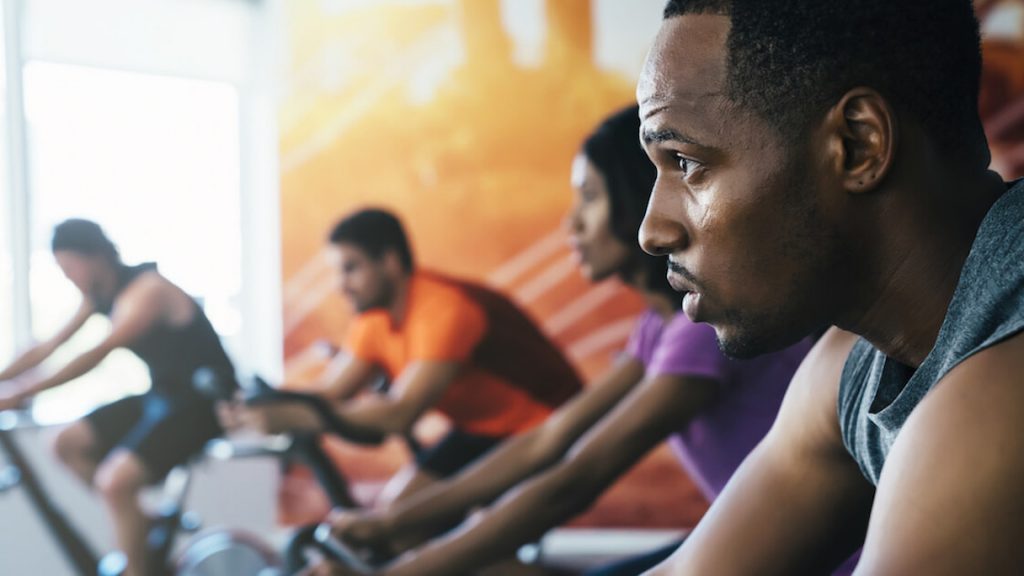
By Sophie Ouellette-Howitz | Rewire
When you think about exercise, do you feel surging dread? Or guilt, because you can’t stick to the schedule you set for yourself? That’s normal. According to Michelle Segar, psychologist and author of “No Sweat: How the Simple Science of Motivation Can Bring You a Lifetime of Fitness,” the knowledge that regular physical activity brings myriad health benefits isn’t enough to motivate most people to incorporate physical activity into their daily lives.
In her book, Segar explains that human beings are hardwired to make decisions based on what makes us happy right now. If the motivation undergirding your exercise plan is linked to a long-term goal, and you don’t see immediate, satisfying progress toward that goal, you’re unlikely to stick to your plan.
But you can leverage human psychology to work in your favor. Changing your mindset around exercising—from a dreaded task you have to complete to stay or get in shape to something you actually enjoy—is the key to success. And you can do it.
The role gender plays
Nearly universal pressure to look a certain way doesn’t help people develop healthy relationships with exercise.
Segar, who directs the University of Michigan’s Sport, Health and Activity Research and Policy Center, co-authored a 2017 study that examined how women’s beliefs and expectations about exercise, as well as their daily goals and priorities, influence their physical activity levels.
“While men have increasing pressure on their body shape, women still have much more societal pressure to be thin, and so their weight is constantly on their minds, whether they are heavy or not,” said Segar, who is also a researcher at the U-M Institute for Research on Women and Gender.
This pressure often doesn’t translate to long-term exercise habits, and sets us up to fail.
“Our primary reason for exercising determines whether we develop unstable, low-quality motivation or high-quality, stable motivation,” she said. “Weight loss as a primary motive for exercise tends to lead women to develop poor quality motivation that fizzles out easily.”
Exercising for instant gratification
Segar is committed to changing the way we mentally frame exercise, taking the emphasis off of weight loss or abstract, long-term health outcomes, and placing it on the benefits it can bring right now.
She teaches the people she works with about the mood-boosting and energy-increasing brain chemicals like endorphins, dopamine, norepinephrine and serotonin that shoot through your system when you exercise. However, she noted, not everyone experiences an immediate lift after physical activity.
Often, Segar said, when people don’t feel the positives, that’s the result of a chore-based mentality surrounding exercise.
“It’s important to always let people know we are all different,” she said. “Sometimes it takes years to start feeling it. Sometimes it stays neutral.”
The one universal rule, she said, is to not push yourself to move in ways that don’t feel good for you.
What ‘counts’ as exercise?
But even that simple rule can set a seemingly unmeetable bar for people who experience unpleasant and even painful feelings when they exercise. If you have negative associations with physical activity, Segar recommends taking baby steps and adopting a learning mindset. A key part of that may be reconsidering what you think “counts” as physical activity.
Segar and her co-investigators on the 2017 study found that the widespread recommendation to shoot for at least 30 minutes of high-intensity exercise prevented many participants from making space for any physical activity at all. Most people are unaware that newer recommendations show lower intensity activity for shorter durations can also produce meaningful health outcomes.
“Try different activities in small increments, like five minutes,” Segar said. “This will help you figure things out. It’s a process.”
That process starts, she said, when you absorb the truth that it’s not your fault previous exercise routines fell apart.
“You’ve learned a formula for exercising that sets most people up to fail.”
From a chore to a gift
Segar has helped numerous people let go of ingrained ideas about physical activity that were holding them back, and instead invest in finding ways to be active that feel good. One of those people is Nancy, who “hated to exercise” when she first met Segar.
“I asked her to pause her desire to lose weight and just focus on building a lifelong relationship with physical activity,” Segar said. “She was relieved, actually!”
Though Nancy had believed at the outset there was no way she’d come to enjoy exercise, she committed to trying new ways of thinking, learning about the science underlying them and reflecting about her own associations and preferences around exercising.
When she tried it with this new mindset in place, “it transformed her meaning of exercise from a chore into a gift,” Segar said.
“Instead of feeling like she ‘should’ walk, she desired doing it,” she continued. “We must help people get their brains to hook into some type of positive experience, if at all possible, so we can leverage the unconscious neuroscience of reward.”
Taste-testing ways of moving your body
If you want to find ways to move your body that feel good for you, Segar suggests putting your focus on strengthening your connection to your body’s desire for movement. Try out different activities—walking, running, biking, basketball—to see what feels right.
“Give yourself permission to ‘taste’ different types of physical activity in small bites and examine the different ways those activities make you feel,” she said. “It’s a process of increasing awareness.”
![]() This article originally appeared on Rewire.
This article originally appeared on Rewire.
© Twin Cities Public Television - 2018. All rights reserved.
Read Next



